Most Cutest Colorful Starfish That’ll Make You Go ‘Aww!’
What comes to mind when I mention that there are stars above and below the ground? Nothing about this should surprise anyone. Here, we are discussing the magnificent Sea stars.
They are just as majestic as the stars above the earth. Simply put, most individuals are ignorant of their beauty. So, in this article, we’ll discuss the cutest and most colorful Starfish thriving underwater that is worth your time and fascination.
What is The Meaning Behind Colorful Starfish/Sea Stars?
Do you know there are over 2,000 distinct starfish species in the world? Or perhaps you’re unaware that starfish, or Asteroidea to give the animal its proper name, aren’t even fish after all.
These amazing organisms are echinoderms, closely related to sea urchins and sand dollars. Therefore, although starfish and sea stars are the same animals, marine biologists recently fixed the error by calling starfish “sea stars.”
The sea stars are among the most beautiful invertebrates in the vast ocean. With neither brain nor blood and an unexpectedly strange system, they digest food outside their body. The sea stars are even capable of regenerating their own arms.
Additionally, colored starfish are associated with security, sensitivity, manifestation, fertility, abundance, and healing in mythology. Many cultures have long connected this fascinating sea creature with luck, fortune, regeneration, and renewal.
To uncover the wonders that make each of these extraordinary and most colorful types of starfish so fascinating, let’s examine the distinctive characteristics of a few of them.
15 Cute & Colorful Starfish
1. Royal Tile Starfish
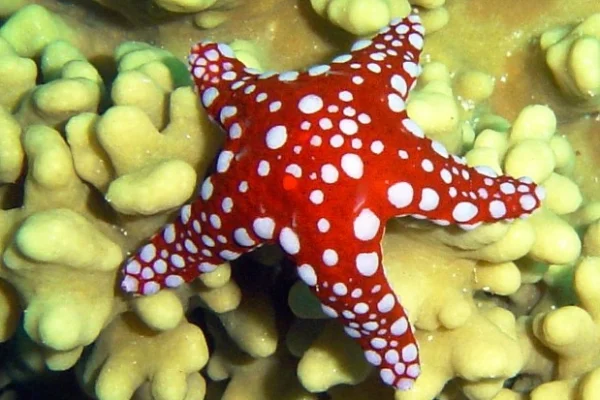
| Scientific name | Fromia ghardaqana |
| Common name | Royal Tile Starfish, Ghardaqa sea star |
| Family | Goniasteridae |
| Geographical location | El Quesir, Red Sea, Egypt |
| Identification | Characteristic bright color with sharp whitish spots all over the body |
The species Fromia ghardaqana has the common name Royal Tile Starfish. Even though they are often placed in aquariums, handling them requires a lot of skill and should only be left to experts.
It is challenging to keep this Fromia starfish alive for a long time. Because we can’t offer them in the aquarium what they may find in the water as food, they eventually starve & die.
Even in huge tanks with abundant supplementary food and microfauna, they are impossible to keep. Thus, these food specialists, cute and colorful fromia starfish, are poor survivors.
2. Necklace Sea Star
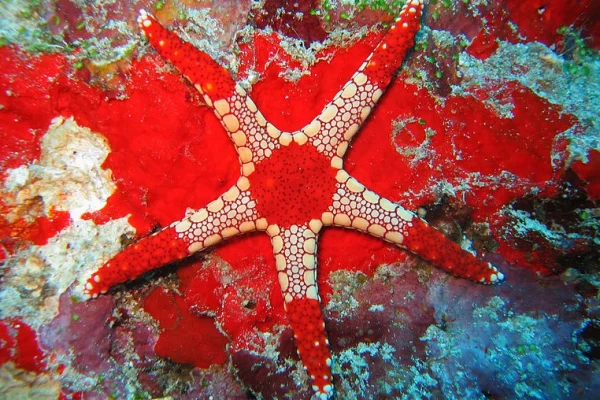
| Scientific name | fromia monilis |
| Common name | Necklace Sea Star, Tiled Sea Star |
| Family | Goniasteridae |
| Geographical location | Indian Ocean, Western Pacific, Australia and Japan |
| Identification | Its appearance: they reach the size of 30cm. The tips of the arms and the disc center of this starfish are bright red, while the remaining parts are paler, forming large plates. |
This species frequently lives alone or in small groups on shallow rocky slopes, reefs, and sandy places. Color-wise, they are very diverse.
Fromia monilis feeds on algae, tiny invertebrates, thin bacterial films, debris, and sponges with encrusting shells.
They share the same remarkable regenerative abilities as the other Sea Stars, allowing them to develop new arms in case of a predator attack or something.
It is better to avoid putting them in brand-new aquariums because there isn’t enough natural food there for them to eat.
3. Biscuit Sea Star (Pentagonaster duebeni)
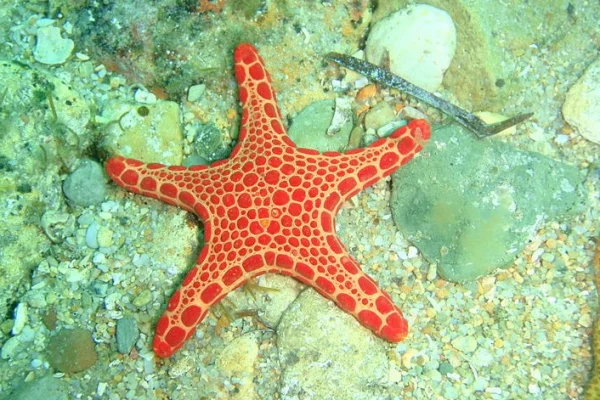
| Scientific name | Pentagonaster duebeni |
| Common name | Species of Biscuit Sea Star |
| Family | Goniasteridae |
| Geographical location | Australian coast |
| Identification | Arms are equal in length to the central disc, with lengths up to 8cm. |
At depths of up to 160 meters below sea level, this biscuit sea star species, Pentagonaster duebeni thrives near exposed and protected reefs.
It is a five-armed flattened starfish with rounded arcs separating the limbs’ blunt tips. Plus, due to the vivid yellow, orange, and red coloring on its plates, which are divided by fine white or yellow lines, this species is readily identifiable.
However, specimens from southern Western Australia exhibit elevated dorsal plates and colors ranging from dark to bright red, which is kind of different.
They eat sponges, bryozoans, and other invertebrates as food.
4. Northern Pacific Sea star
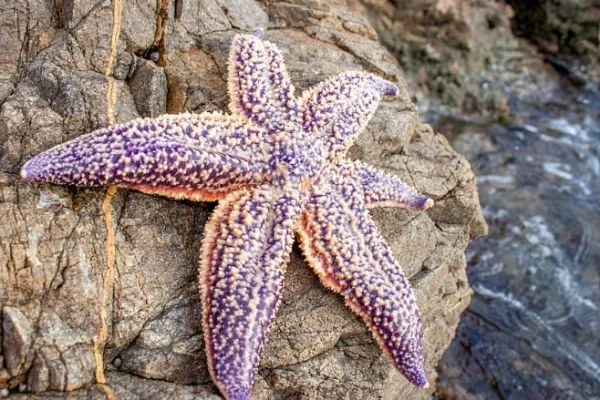
| Scientific name | Asterias amurensis |
| Common name | Northern Pacific sea star, flatbottom sea star, Japanese sea star, and purple-orange sea star |
| Family | Asteriidae |
| Geographical location | Native to the Pacific Ocean near Japan, Russia, Northern China, and Korea |
| Identification | Distinctive upturned tips of its arms |
The Northern Pacific Sea star, Asterias amurensis, is a sea star that lives in bays and shallow seas.
It is a powerful, aggressive predator of local species like oysters, mussels, and scallops. It is frequently preyed on by other species of starfish. Their bottom is all yellow. On its dorsal side, it displays a variety of hues, from orange to yellow and occasionally red and purple.
These sea stars move in the direction of light in a positive phototactic response. When it has both shaded and lit areas, it is seen that they shift toward the illuminated area.
5. Sugar Starfish – Asterias rubens
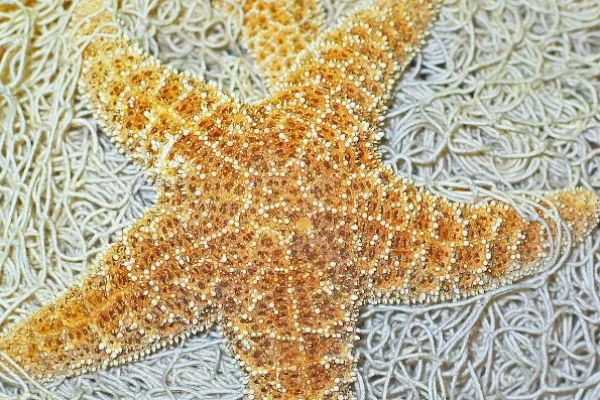
| Scientific name | Asterias rubens |
| Common name | Common starfish, common sea star, or sugar starfish |
| Family | Asteriidae |
| Geographical location | North-east Atlantic, Arctic Norway, along Atlantic coasts to Senegal, and only found occasionally in the Mediterranean |
| Identification | It has five tapering arms, broad at the base, and slightly turned up at the tip when active. |
The most common and renowned starfish in the northeast Atlantic is the sugar starfish (Asterias rubens). The common starfish inhabits rocky and gravelly substrates, where it consumes mollusks and other benthic invertebrates for food.
Although they are commonly orange-colored, specimens discovered at deeper depths are pale brown or violet.
The Asterias rubens can crawl at speeds up to 30 cm per minute, or 60 feet per hour, on their short legs. Their tube feet’s suction cups are not used for walking; rather, they are utilized to grip, ingest, and scale objects.
6. Panamic Cushion Star
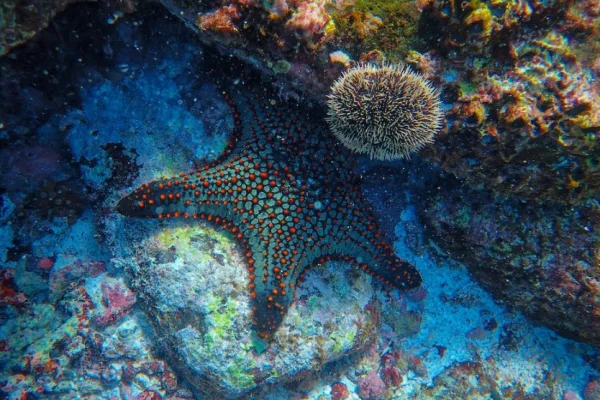
| Scientific name | Pentaceraster cumingi |
| Common name | Panamic cushion star, Cortez starfish, or knobby star |
| Family | Oreasteridae |
| Geographical location | Eastern Pacific: Costa Rica and Galapagos |
| Identification | They have spiny skeletal plates (red) occupying almost as much surface area as the flat calcareous plates which are grey. |
Panamic cushion star is the local name for Pentaceraster cumingi.
Scavenging carnivorous items make up the majority of their nutritional needs. However, algae from the ocean floor, tiny creatures, and seagrass are among its favorite foods. Nevertheless, they sometimes even eat other echinoderms.
These sea stars live on stony seafloors in tropical east Pacific coastlines.
Curio shops frequently have the skeletons of Panamic cushion stars since they are casual ornaments in Mexico and Peru. As a result, their Peruvian population is almost extinct.
7. Giant Spined Star (Pisaster giganteus)
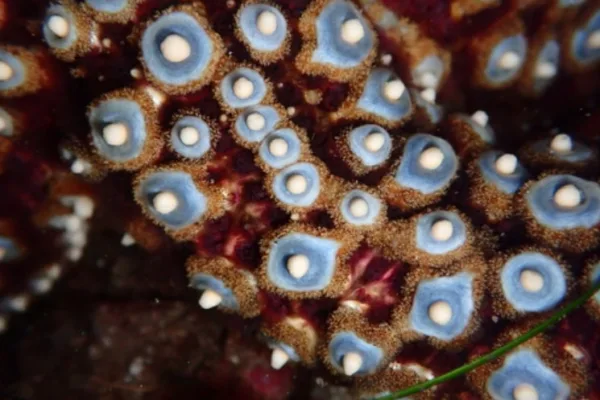
| Scientific name | Pisaster giganteus |
| Common name | Giant Spined Star |
| Family | Asteriidae |
| Geographical location | West Coast of North America |
| Identification | They have thick, bluish in color with white, pink, or purple tips blunt spines that are swollen and surrounded by brown fuzz, and pedicellariae that have a plier-like shape. |
Despite its common name, “Giant Spined Star,” Pisaster giganteus is actually quite small yet has huge, prominent spines. In fact, the average Ochre Sea Star is bigger than the average Pisaster giganteus.
They consume a variety of creatures, such as bivalves, gastropods, chitons, snails, etc.
Giant sea stars have broad limbs and a hefty body. Although occasionally, they have a yellowish or grayish surface, it is usually tan or brown.
Only a few predators, including marine otters and sea birds, prey on the gigantic sea star. Additionally, several species of sea snails consume their larvae.
8. Ochre Sea Star
| Scientific name | Pisaster ochraceus |
| Common name | Ochre Sea Stars |
| Family | Asteriidae |
| Geographical location | Alaska to Baja, California |
| Identification | Five arms and a rough surface, the short spines on the upper surface arranged in wavy patterns. |
Many other species can live and prosper because of the predatory ochre sea star’s selective consumption of mussels. As a result, they are given the dignified name “keystone species,” as their presence or absence has a profound impact on the entire community in the region.
The ochre sea star is a large starfish with five arms, a rough upper surface, and small spines arranged in wavy patterns. Although there is a significant variance in color, most of them are either orange (ochre) or purple, and there is yet no compelling theory to account for this color polymorphism.
At low tides, swarms of orange and/or purple starfish are exposed; they are frequently gathered in crevices or under shady ledges where they won’t get roasted by the sun.
9. Royal sea star- Astropecten articulatus

| Scientific name | Astropecten articulatus |
| Common name | The Royal Starfish |
| Family | Astropectinidae |
| Geographical location | Western Atlantic Ocean including the United States East Coast, the Gulf of Mexico, and the Caribbean Sea |
| Identification | It is distinguished for its vivid hues. |
The Royal Starfish, with the scientific name Astropecten articulatus, lives in the West Atlantic Ocean.
Their vivid orange, crimson, and purple bodies are a favored sight for tidal pool tourists.
The Royal Starfish is distinguished for its vivid hues. The sea star’s middle section (a purple granulated disk) and its five limbs are also purple. It shows an orange outline (the line running through the margin). It also has white spines attached to the orange margin and tube feet at the ends of its rays.
They favor prey that is consistently of good quality and size. 70% of what they eat are mollusks. They frequently overlook smaller prey.
10. Crown of Thorns Starfish- Acanthaster planci
| Scientific name | Acanthaster planci |
| Common name | The crown-of-thorns starfish |
| Family | Acanthasteridae |
| Geographical location | Native to the Great Barrier Reef, Indo-Pacific region, coral reefs from the Red Sea to the west coast of the Americas. |
| Identification | Their strikingly unique appearance and huge size (up to 80cm diameter) |
One of the world’s biggest starfish!!!
The venomous thorn-like spines over the upper surface of Acanthaster planci resemble the biblical crown of thorns, giving the creature its common name.
Interestingly, they are often hard to spot on a reef despite their large size. Since they favor hiding in the crevices and ledges of the reef.
Adult crown-of-thorns starfish have an intense appetite for hard corals that are generally fast-growing. They consume their meal by coating it with digestive enzymes, making coral tissue turn into soup, and pushing their stomach out through their mouth.
They pull their stomachs back into their bodies thereafter.
11. Blue Sea Star (Phataria unifascialis)

| Scientific name | Phataria unifascialis |
| Common name | Blue Sea Star |
| Family | Ophidiasteridae |
| Geographical location | The eastern Pacific Ocean |
| Identification | Five long tubular arms, grey base color, each arm with two brown stripes along the length with blue spots in between. |
This species is occasionally called the blue Sea Star or the Tan Starfish. Although both of these names are already used for other species. Their five long tubular arms and gray base color help us recognize them.
Additionally, each arm has two brown stripes running the length of it, with blue dots here and there.
This sea star may reach a height of 18 cm and has a blue or tan tint.
12. Mosaic Sea Star – Plectaster decanus
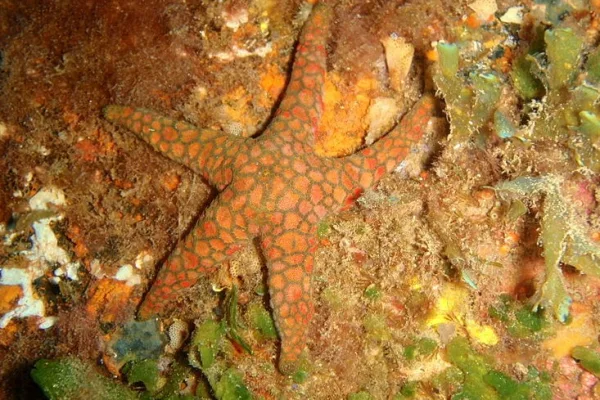
| Scientific name | Plectaster decanus |
| Common name | The mosaic sea star |
| Family | Echinasteridae |
| Geographical location | Southern coast of Australia |
| Identification | Aboral surface with a hexagonal network of granular ridges covering its red upper surface |
The plectaster genus has only one species, the mosaic sea star. It is an elegant & colorful starfish with five-rounded arms that taper to a small, rounded end.
We can easily see the aboral surface with a hexagonal network of granular ridges covering its red upper surface. It has a smooth texture and divides variously colored regions, including orange, purple, and red, in a mosaic effect, hence the name.
Plectaster decanus is one of the rare sea stars that can make people feel numb due to its poison. Therefore, it is best not to touch them or take them from the water for the sake of you both.
13. Australia Red and Yellow Iconaster Sea Star
| Scientific name | Iconaster longimanus |
| Common name | The Double Sea Star |
| Family | Goniasteridae |
| Geographical location | Tropical Australia |
| Identification | Unique appearance with a reddish star in the middle, the rest of the body is creamy yellow to brown |
According to all accounts, the Double Sea Star (Iconaster longimanus) is quite an uncommon animal in the wild.
As rare as if a diver makes more than 600 dives around the Philippines, he would only ever spot one specimen.
Throughout its range, this sea star is quite varying. Because if you observe the ones from Australia, they give a distinct phenotype. The appearance of a mix creamy yellow color typically has a redder shade in the middle.
14. Firebrick Starfish
| Scientific name | Asterodiscides truncatus |
| Common name | The firebrick starfish |
| Family | Asterodiscididae |
| Geographical location | Australia and New Zealand |
| Identification | Unique appearance, completely covered in lumps and bumps of all sizes |
The firebrick starfish, Asterodiscides truncatus, is a ridiculously gorgeous species of five-armed starfish living around Australia and New Zealand.
They stand out in our list of colorful starfish because they are entirely covered in lumps and bumps of all sizes that are yellow, orange, and purple in color.
At the foot of the kelp forest, the firebrick starfish eats by grazing on sponges and other vibrant benthic creatures, where they blend in well with their bright coloration.
15. Henricia sanguinolenta
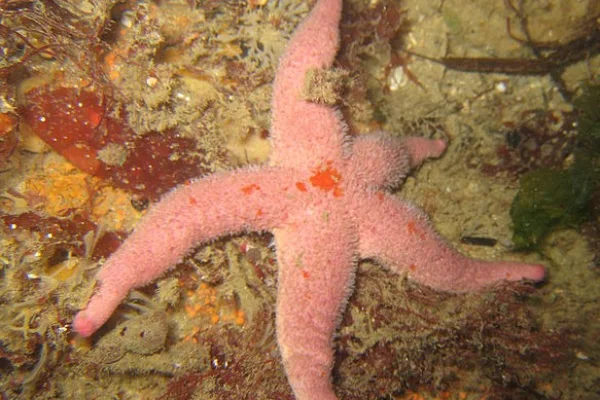
| Scientific name | Henricia sanguinolenta |
| Common name | The northern henricia |
| Family | Echinasteridae |
| Geographical location | North Atlantic and North Pacific Oceans |
| Identification | The characteristic appearance |
The North Atlantic and North Pacific waters are home to the northern henricia. Henricia sanguinolenta and Henricia oculata, also known as “bloody Henry,” are highly similar species that can only be identified through scientific testing.
These sea stars eat sponges and bryozoans, moving the captured particles into their mouths via ciliated tracts and mucus. Additionally, they can use their skin to pick up nutrients directly from seawater.
Despite being hard to differentiate medically, the blood stars have distinct sexes.
Concluding The List of Most Colorful Starfish
Starfish are among the most exquisite organisms in nature. They are, however, echinoderms and not fish. These creatures are now referred to as sea stars.
The planet is home to more than 2,000 different species of colorful starfish. Among all the Sea stars, the families Goniasteridae, Echinasteridae, and Asterodiscididae featured the most colorful and adorable species.
These species come in an extensive diversity, which is never anything less than astounding to true enthusiasts.
FAQs
Q1. What is the most colorful starfish?
Ans. Each starfish mentioned in the above list is among the world’s most colorful starfish. All of them are unique, beautiful, and attractive in their own way. However, as soon as you google the most colorful starfish in nature, you will find the royal starfish, Astropecten articulatus, as the top result.
Q2. Are starfish Colorful?
Ans. Starfish are fascinating aquatic creatures that come in more than 2000 species with a wide range of colors, forms, and sizes. Because of their vivid colors, starfish, often called sea stars, are among the most attractive creatures in the ocean world.
Q3. What is the rarest sea star?
Ans. One of the rarest sea stars—the sunflower sea star—is even listed by the IUCN as “critically endangered.” The giant sea star Pycnopodia helianthoides lives in the Pacific Ocean’s northern region. It is one of the biggest sea stars in the world and the sole species in its genus.
Q4. Do green starfish exist?
Ans. Without a doubt, the answer is yes! In fact, sea stars are the organisms with the greatest variety of colors, forms, and sizes. Green is undoubtedly one of those vibrant hues. For example, the green brittle starfish, which is mostly pastel green in color and has a compact disc-shaped body and long, worm-like limbs coated in tiny spines or feet to aid in mobility and food hunting. For shelter, the Green Brittle Starfish require sandy ground with lots of living rock.
Q5. Are starfish poisonous?
Ans. Most of the time, not! As they cannot even bite, those cute little creatures pose no threat to humans. The majority of starfish are not toxic. However, One species of starfish, the crown-of-thorns starfish, can be poisonous if its spines pierce the skin.
Q6. Do starfish have 2 hearts?
Ans. One interesting fact about starfish is that they do not have blood or brains. Thus, it itself is an explanation for why sea stars do not require a heart at all. Consequently, they don’t have one. Actually, some other animals do just fine without hearts. Examples include jellyfish, starfish, and even corals.
Q7. Is it OK to touch starfish?
Ans. Since starfish get oxygen from the ocean through channels on their exterior bodies, it is advised not to touch or remove them from the ocean because doing so could cause them to suffocate. In fact, sea creatures can be harmed by chemicals found in sunscreen and skin oil, which is another reason to avoid touching them.
Q8. Can a starfish see?
Ans. The answer is, yes. They do see! The majority of starfish have their eyes on the ends of their arms. They are difficult to notice, and even if you do, you might not know that they are eyes.
Also Read:
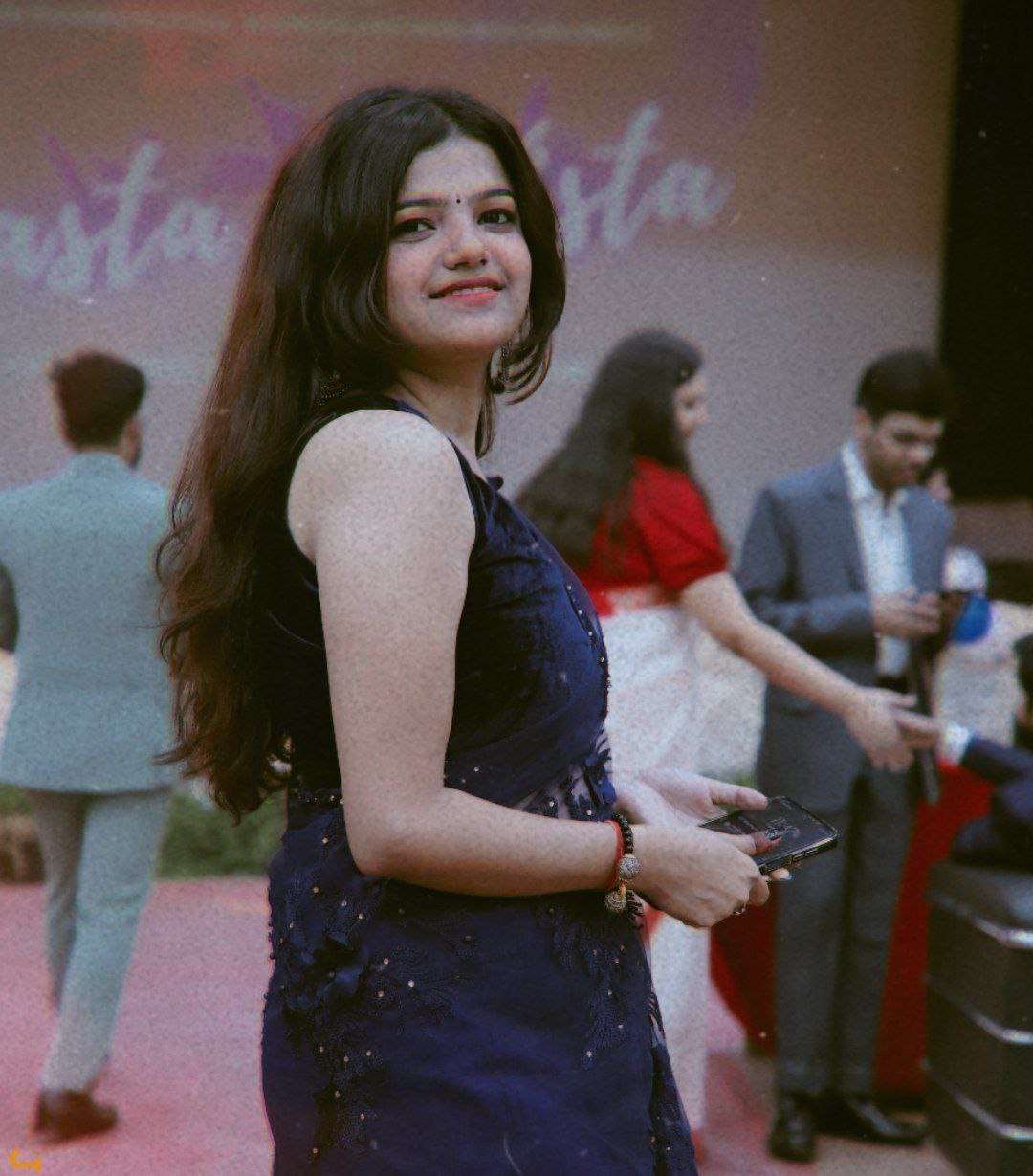
Anjali Prasad, a B. Pharm. graduate who works as a content writer for HowItSee, is based in Delhi. Except for her, not many people take the typical road from healthcare to writing. Her love of writing stemmed from her involvement in the college literature society and her early journaling at the age of 7. Hence, the love of learning and the spirit of exploration are what drew her to this career. You can find her on common social media like Instagram.
